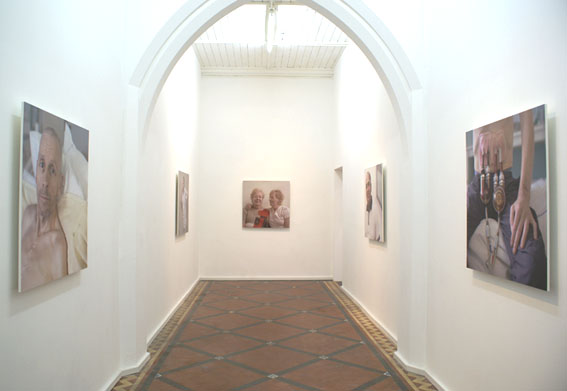|
|
Through all the differences and similarities of sound and vision, seeing and hearing, looking and listening, a rapprochement emerges in the collaboration between Wainwright and Wynne. Meaning arises out of fades and overlaps, sudden appearances and vanishings, fusing and disparity. Distinctions of the senses are less important than their indivisibility. Are we seeing or hearing, and how much of either perception is a consequence of the other? David Toop |
|
Ed Baxter
At first sight, itís three rooms of large format portrait photographs Ė no cables or speakers anywhere in view. But there is sound everywhere: as shifting audio environment of high-tech hospital machinery, the ominous panting of a pump. Then suddenly a picture speaks to you. This is a cool, spacious show. It’s as if the artists’ very lack of agenda has opened up a space in which the viewer can hear the patientsí voices and think calmly. Clive Bell |


